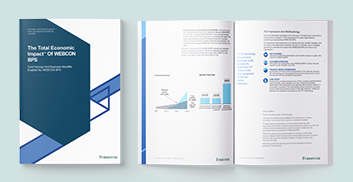A well-executed business process management (BPM) system can greatly affect how your organization runs. This includes everything from boosting your profits and productivity to improving overall satisfaction rates among customers and employees. In order to get these benefits, though, you need to make sure you’re following the right steps for effective BPM implementation, ensuring that both your BPM software and your general processes are set up for success.


BPM Implementation Checklist: 5 Steps to Success
A lot goes into designing a stellar BPM system. And while choosing the right BPMS is a big part of the equation, it’s not the only thing you’ll need to optimize throughout the implementation process.
As you get the ball rolling on BPM implementation, here are five steps to ensuring your system is uniquely geared toward operational efficiency and productivity.
Step 1: Preparation
A BPM system is a big investment, so it makes sense you’d want to do plenty of preparation before you commit.
Prior to selecting a platform, work with relevant team members to clearly define the goals and objectives of BPM software at your organization, including the requirements and expectations of your key stakeholders.
In addition to general brainstorming, a process audit of existing practices should be performed to identify notable metrics and provide a benchmark for improvements. By looking at data and keeping all need-to-know parties in the loop, you ensure stakeholder buy-in and a smooth BPM system implementation. You also provide yourself with a better idea of the features and integrations you’ll need out of a BPM software platform.
Step 2: System Design and Modeling
Wouldn’t it be great if you had a crystal ball that could tell you exactly what will and won’t work toward your BPM goals? Well, we’re not there yet, but we do have the next best thing for getting this sort of advanced insight.
Process modeling tools will help you design efficient workflows ahead of BPM system implementation, allowing you to analyze the process for potential improvements and identify process bottlenecks before committing to a BPM software strategy. Use tools like process diagrams and flowcharts, and keep your desired goals top of mind, so you know what workflow efficiencies you need to make to get where you want to go. You can take advantage of innovative tools like Designer Desk, which is no-code process modeling software from WEBCON.
Step 3: System Implementation
By this point in the BPM checklist, you’ve identified what you want to achieve and how to get there. Now you’ll be able to select the right BPM software for your needs and dive into implementation itself.
System implementation is a multi-step process involving the integration of your BPMS platform with existing tools, system testing, and documentation. Each of these steps is integral to your ultimate success, and they must be completed as you digitize your organization's business processes.
Test throughout the implementation process to ensure your system is functioning correctly. And don’t hesitate to contact your BPM system provider if you hit any hurdles.
Step 4: User Training and Support
Your system is only as good as your ability to use it.
User training and support are essential for the successful implementation of BPM, and this includes comprehensive training for any employee who will be involved in using your BPM tool(s).
Assign an IT lead who can be available for support during training and beyond. This individual should have deep knowledge of your BPM platform and objectives, with the technical skills needed to resolve the various challenges your employees might come across.
Step 5: Monitoring and Optimization
Implementation is an ongoing process requiring long-term monitoring and optimization of your BMP strategy to ensure it meets (and continues to meet) your objectives.
Because continuous process improvements are necessary for sustainable success, have a plan for how you’re going to track process metrics, identify potential areas of improvement, and make adequate changes, both in the immediate aftermath of implementation and in the months, quarters, and years to come. Maintaining diligent oversight of your BPM system helps you catch new challenges at their earliest stages and is key to getting the most out of your investment.
The Smartest Low-Code BPM Solution for Your Business
When you take the proper steps toward the implementation of your BPM platform, you guarantee smoother sailing through the design and execution of your new strategy. Follow the checklist above to streamline BPM system implementation and reap the benefits of improved productivity and efficiency, and learn how WEBCON’s low-code software can help you maximize the impact of proper business process management at your organization.









